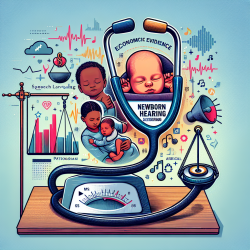Unlocking Potential: The Science of Stress and Social Structures
In the ever-evolving field of speech-language pathology, understanding the intricate connections between biology and social structures is crucial for creating effective interventions. The research article, "Connecting the Biology of Stress, Allostatic Load, and Epigenetics to Social Structures and Processes," offers profound insights into how these elements interplay to influence child development. As practitioners, it is imperative to harness these insights to enhance therapeutic outcomes for children.
The Science Behind Stress
Stress is not just a psychological phenomenon; it is deeply rooted in biological processes. The concept of allostatic load refers to the cumulative burden of chronic stress and life events. This research highlights how stress impacts the brain and body at an epigenetic level, affecting not only immediate health but also long-term life trajectories.
Social Structures and Stress
Social structures, including socioeconomic status, race, and community environments, play a significant role in shaping stress responses. The study underscores the importance of understanding these social determinants of health to address the root causes of stress. For practitioners, this means looking beyond individual therapy and considering the broader social context of each child.
Implications for Practitioners
Practitioners can improve their skills by incorporating the following strategies:
- Holistic Assessment: Evaluate not just the child's speech and language abilities, but also their social environment and stress levels.
- Interdisciplinary Collaboration: Work alongside social workers, psychologists, and educators to create a comprehensive support system for the child.
- Community Engagement: Advocate for policies and programs that address social inequalities and provide resources to families in need.
Encouraging Further Research
While this study provides a robust framework, it also opens the door for further research. Practitioners are encouraged to explore how specific interventions can mitigate the effects of toxic stress and promote resilience in children. Understanding the nuanced interactions between biology and social factors can lead to innovative therapeutic approaches.
To read the original research paper, please follow this link: Connecting the biology of stress, allostatic load and epigenetics to social structures and processes.










